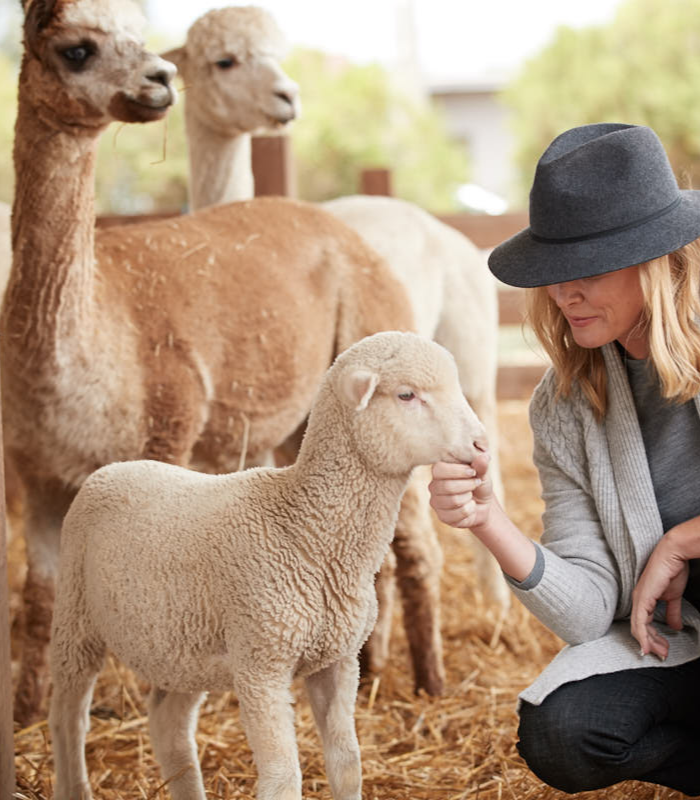When it comes to cozy comfort and sustainable living, few materials rival the versatility and charm of fiber wool. Whether it's warming us on chilly days or adding a touch of rustic elegance to our homes, fiber wool has long been cherished for its softness, durability, and eco-friendly properties. Let's delve into the world of fiber wool, exploring its benefits, uses, and why it's a must-have for conscious consumers.
What are Wool Fibres?
Wool, or fiber wool as it is commonly called, is a natural fiber that is mainly made from sheep's fleece. But it can also be derived from other species, including some camelids (alpaca and llama), goats (cashmere and mohair), and rabbits (angora). Regardless of the source, wool is prized for its unique properties that make it suitable for a wide range of applications.
Fiber wool is more than just a substance; it's a classic representation of coziness, excellence, and sustainability. Wool is a material that epitomizes thoughtful consumption and conscientious living due to its durability, softness, and warmth. Whether we use it as clothing or to enhance our living environments we can appreciate the coziness and elegance of Natural wool fibres.
Is Alpaca Wool itchy?
Alpaca wool is well known for its silky texture and opulent softness, which makes it a popular option for people looking for warmth without the itching that is sometimes associated with other wool kinds. Alpaca fleece is incredibly smooth and delicate against the skin, in contrast to sheep's wool, which occasionally irritates skin because of its rougher strands. Alpaca wool has a different structure from sheep's wool, making it smoother and hollow, therefore clothing made with it is less prone to cause itching or discomfort.
Alpaca wool is even more hypoallergenic since it has a low concentration of lanolin, a naturally occurring oil in sheep's wool that can trigger allergy reactions in certain people. Alpaca wool, in general, provides an opulent and non-itchy feeling, which makes it a great option for people with sensitive skin or anyone looking for unmatched warmth and comfort.
Can you be allergic to alpaca wool?
While alpaca wool is generally considered hypoallergenic compared to sheep's wool, some individuals may still experience allergic reactions to it. Allergic reactions to alpaca wool are rare, but they can occur, especially in individuals who are sensitive to animal fibres or have wool allergies. The proteins present in alpaca wool, similar to those found in other animal fibres, may trigger allergic symptoms such as itching, redness, or skin irritation in susceptible individuals. Additionally, although alpaca wool contains less lanolin than sheep's wool, some people may still be sensitive to other compounds present in the fiber. If you suspect you may be allergic to alpaca wool, it's essential to test a small patch of skin before wearing garments made from this material extensively. If allergic reactions persist, it's advisable to avoid alpaca wool and opt for alternative fibres that are less likely to cause irritation.
What is Merino Wool?
The Merino sheep breed produces a type of wool called Merino wool, which is prized for its incredibly soft and fine fibres. Merino sheep are native to Spain with the largest herd in the world located in Australia. Merino Wool is known for being exceptionally warm, comfortable, and adaptable. Compared to conventional wool, merino wool has significantly finer fibres, which makes it softer and less itchy. Merino wool's innate flexibility and moisture-wicking qualities, together with its fine texture, make it a great material for a variety of clothes, from comfortable sweaters and scarves to light base layers and sportswear. Merino wool is a popular among athletes and outdoor enthusiasts since it is also naturally odor-resistant and breathable.
Is Merino Wool itchy?
Merino wool is known for its softness and fine fibres, making it less likely to cause itchiness compared to other types of wool. Merino wool is known for its wonderful softness and fine fibres, which help to explain why it's considered to be among the least irritating wool varieties. Most people find Merino wool to be comfortable and non-irritating, while some people may still experience moderate discomfort or sensitivity when wearing it, especially if they have exceptionally sensitive skin or wool allergies. Merino wool is frequently used for base layers, sportswear, and even delicate clothing worn adjacent to the skin because of its distinctive feel and makeup. But individual reactions might differ, just as with any natural fiber, so it's always best to test a small area of skin before wearing Merino wool extensively—especially for people who are known to have sensitivities.
What is Sheep’s wool?
Sheep's fleece is the natural source of sheepskin wool, sometimes referred to as sheep's wool. Known for its warmth, durability, and versatility, this textile is among the oldest and most commonly used in human history. Sheepskin wool is a perfect material for many different purposes, such as garments, blankets, upholstery, and shoes because of its crimped texture, softness, and insulating qualities. Because wool fibres drain moisture away from the body and are naturally flame- and water-resistant, sheepskin wool is especially well-suited for outdoor and performance clothing. Sheepskin wool is also biodegradable and renewable, which makes it a green option for people who care about the environment.
Sheep's fleece is the natural source of sheepskin wool, sometimes referred to as sheep's wool. Thank you for its warmth, durability, and versatility, this textile is among the oldest and most commonly used in human history. Sheepskin wool is a perfect material for many different purposes, such as garments, blankets, upholstery, and shoes because of its crimped texture, softness, and insulating qualities. Because wool fibres drain moisture away from the body and are naturally flame- and water-resistant, sheepskin wool is especially well-suited for outdoor and performance clothing. Sheepskin wool is also biodegradable and renewable, which makes it a green option for people who care about the environment.







